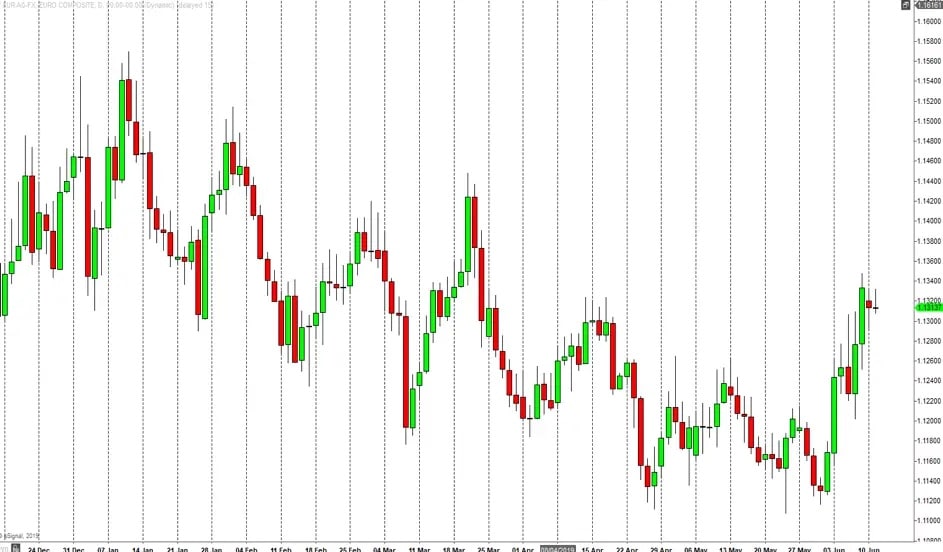Best trading app strategy
The world of trading has evolved with the advent of technology, providing traders with powerful tools to amplify their trading strategies. Trading apps, in particular, have become a game-changer, offering a combination of convenience, information, and functionality to novice and experienced traders alike.
The beauty of trading apps lies in their accessibility and versatility. But how do you ensure you’re getting the most out of your trading app? What is the best strategy to employ? Let’s dig into the myriad aspects that come into play when formulating your trading strategy with a trading app.

Understanding the Basics of Trading with Apps
The Role of Trading Apps in the Modern Market
Trading apps are at the forefront of democratising finance. They’ve broken down traditional barriers to entry, paving the way for a new generation of traders. However, as with all technological advancements these days, this development comes with risks as well as opportunities. This obviously demands a lot of society in terms of education and regulation.
Features and Functionalities of Trading Apps
From real-time market data to advanced analytics tools, trading apps offer a variety of features that can aid your trading strategy. Understanding these functionalities can help you utilise the app to its fullest potential.
Choosing the Right Trading App
With a sea of trading apps to choose from, it’s crucial to find one that aligns with your trading goals and risk tolerance. Here is a comprehensive list of considerations for reviewing trading apps.
Defining Your Trading Goals and Risk Tolerance
Identifying Your Trading Objectives
One fundamental aspect of this strategy is defining your trading objectives. These objectives could range from long-term wealth accumulation to chasing short-term profits. However, it’s crucial to not limit your understanding to just these basic objectives. They can be intricate and diverse depending on individual financial goals, risk tolerance, and the time horizon for investment.
Your trading objectives will largely be defined by your personal financial goals. Do you wish to save for retirement, buy a house, fund your child’s education, or create an emergency fund? These goals dictate the duration and nature of your investments. For instance, if you aim to buy a house in the next three years, you may want to consider short-term trading strategies focused on capital preservation and moderate growth. On the other hand, saving for retirement allows for a longer time horizon, accommodating more risk and potentially higher returns through long-term strategies.
Assessing Your Risk Tolerance
Another critical factor in setting your trading objectives is understanding your risk tolerance. This term refers to the level of financial risk you’re willing to undertake in your investments. Are you risk-averse, or do you have the financial stability and emotional resilience to endure potential losses for the possibility of greater returns? Your risk tolerance will significantly impact the type of assets you trade and the strategies you implement. For instance, higher-risk tolerance could lead to more aggressive strategies, including derivatives and foreign exchange trading, while a conservative risk tolerance might lean towards bonds or blue-chip stocks. Read more on risk management when trading with trading apps.
Aligning Your Trading Strategy with Your Goals and Risk Profile
How you align your trading approach with your objectives and risk profile can significantly influence your success in the trading world.
The time you intend to hold an investment before selling it, known as the investment time horizon, is also a key factor in identifying your trading objectives. Short-term trading strategies such as day trading or swing trading involve buying and selling securities within a single day or over a few days or weeks, respectively. These strategies aim to capitalise on market volatility but also carry significant risk. Conversely, long-term strategies involve holding investments for several years or even decades, focusing on steady, compounded returns. Your objectives should align with the most suitable time horizon for your goals and risk tolerance.
Defining Clear Financial Targets
Your trading objectives should also be defined in numerical terms. What rate of return are you aiming for? Are you looking to achieve a certain net worth or generate a specific income through your investments? Defining clear, measurable financial targets adds precision to your trading strategy and allows you to gauge your progress effectively. Remember, though, that these targets should be realistic, given your available capital, risk tolerance, and market conditions.
Lastly, it’s important to remember that trading objectives aren’t set in stone. As you traverse through different life stages, your financial goals, risk tolerance, and time horizons may change. Therefore, it’s crucial to review and adjust your trading objectives regularly.
Navigating Market Analysis with Trading Apps
Understanding Technical Analysis
Deciphering charts, indicators, and other technical tools can give you an edge in predicting future price movements. Most trading apps offer some tools for technical analysis. However, the amount of technical analysis tools offered and the complexity of the tools available differ greatly between apps.
Technical analysis is a financial market technique that involves the study of past market data, primarily price and volume. The core idea is to decipher patterns within charts, indicators, and other technical tools, which can potentially provide a substantial edge in predicting future price movements.

Not just confined to chart patterns, it also utilizes various indicators, such as moving averages, Relative Strength Index (RSI), and Bollinger Bands, among others. These can help assess market conditions like trend direction, volatility, and overbought or oversold conditions.
These tools act as an arsenal for traders and investors, allowing them to make informed decisions based on statistical evidence rather than mere speculation. This form of analysis also uses the Fibonacci retracement tool to identify key levels of support and resistance in a price chart.
While technical analysis does not guarantee success, it provides a structured, statistical approach to forecasting. It equips market participants with a mechanism to manage risk, make strategic trading decisions and helps to eliminate emotional bias, which is often a pitfall in trading.
Overall, mastering technical analysis requires a blend of careful study, experience, and intuition. The ability to interpret data and foresee possible trends effectively can indeed turn the tide in the favor of those willing to comprehend its nuances.
Grasping Fundamental Analysis
Fundamental analysis is a comprehensive approach to assess a company’s inherent value. It involves a thorough examination of a company’s financials, which includes balance sheets, income statements, and cash flow reports. Beyond this, it entails looking into factors such as the company’s management, its position within the industry, and the broader market conditions.
Additional components of fundamental analysis include the study of macroeconomic factors such as economic indicators, industry trends, political stability, and currency movements. A comprehensive fundamental analysis also entails evaluating qualitative factors like company’s brand reputation, patents, and proprietary technology.
Through this meticulous evaluation, investors can establish if a company is overvalued or undervalued in the market, hence making strategic investment decisions. This method offers a broader perspective to investors, allowing them to not just assess the company’s present state, but also predict its potential future growth and profitability. Understanding fundamental analysis is a key ingredient in creating a resilient and well-informed investment strategy.
Using Trading Apps for Market Analysis
Trading apps often provide tools for both technical and fundamental analysis. Understanding how to leverage these tools can help in making informed trading decisions.
Execution of Trades and Portfolio Management
Timing Your Trades
Knowing when to enter and exit a trade is a critical component of a successful trading strategy. The optimal timing hinges on multiple factors, including market trends, economic indicators, and individual asset performance.
The entry point in a trade often corresponds with a perceived opportunity, such as an undervalued asset or a favorable market condition. On the other hand, exit points are determined by factors like achieving your target profit, or to cut losses during a trend reversal. Effective timing, therefore, requires continuous market monitoring, informed decision-making, and a disciplined adherence to your trading strategy.
Managing Your Portfolio with a Trading App
A trading app can be a powerful tool in managing and diversifying your portfolio, helping to mitigate risk and maximise returns. Advanced trading apps offer comprehensive tools for tracking your investments, including portfolio balance, historical performance, and future projections. They also allow for immediate execution of trades, which can be vital in volatile markets.
Adapting to Market Conditions
The ability to swiftly adapt your trading strategy to fluctuating market conditions is a valuable skill in trading. This involves recognising and understanding market trends, economic indicators, and financial news to adjust your portfolio accordingly. For instance, during an economic downturn, a trader might shift from growth stocks to more stable value stocks or defensive sectors such as utilities and consumer staples. On the other hand, during a bull market, a trader may increase their exposure to high-growth sectors such as technology or renewable energy. Adapting to market conditions thus requires constant vigilance, flexibility, and a well-informed understanding of the broader economic landscape. It’s all about being proactive rather than reactive, making strategic decisions based on foresight and careful analysis rather than emotion or panic.
Enhancing Your Trading Strategy with Advanced App Features
Utilising Automated Trading Features
Many trading apps offer automated trading features. These can be particularly useful for executing trades at specific times or conditions without constant monitoring.
Harnessing the Power of Social Trading
Social trading, where traders can follow and replicate the strategies of top-performing traders, is another advanced feature offered by many trading apps, read more here.
Navigating the World of Cryptocurrency Trading
With the burgeoning popularity of cryptocurrencies, many trading apps now provide options for trading these digital assets.
The Importance of Education and Research in Trading
In the world of trading, knowledge truly is power. Education and research serve as the bedrock upon which successful trading strategies are built. Understanding market fundamentals, mastering technical analysis, staying updated with economic events and trends, and comprehending the underlying principles of risk management are all crucial components of this learning process.
Through trading apps, access to this wealth of information is at your fingertips. Many of these applications offer educational resources like webinars, tutorials, e-books, and blog posts, making it easier for you to acquire knowledge and enhance your trading acumen. Additionally, trading apps provide news updates and analytical tools that facilitate continuous research and learning. Learn more about the role of education and research in mobile trading.
Conclusion
When it comes to using a trading app, the best strategy encompasses a range of aspects. From understanding the basics of trading apps and defining your trading goals to performing market analysis and managing your portfolio, each step influences your overall trading experience and success.
FAQs
Choose a trading app that suits your trading goals, risk tolerance, and desired functionalities. It’s also essential to consider factors like user interface, customer support, and fees.
Most reputable trading apps prioritize security, employing encryption technologies to safeguard user data. Always ensure that your chosen app has robust security measures in place.
While a trading app is a valuable tool, successful trading requires a sound understanding of the market and a well-crafted strategy. It’s crucial to remember that a trading app is a tool to aid your strategy, not a guarantee of success.
Establishing a well-diversified portfolio, setting stop-loss orders, and regularly reviewing your trading strategy are a few ways to mitigate risk when trading with an app.
While both involve the buying and selling of assets, trading typically involves more frequent transactions aiming for short-term profits, while investing is a long-term strategy aimed at accumulating wealth over time.
Yes, many traders use multiple apps to benefit from the unique features of each. However, managing multiple apps can be time-consuming and may complicate your trading strategy.
Read more about Trading App Strategy
Tips for Staying Disciplined and Emotionally Balanced on Mobile Trading Apps
Published
Mobile Trading Apps – Essential Tips for Beginners
Published
Mastering Mobile Trading: Comprehensive Risk Management Strategies to Safeguard Your Capital
Published
Day Trading Strategies for Mobile Trading App Users
Published
Mobile Trading Apps and the Rise of DIY Investing
Published
Social Trading with Mobile Apps: Copying the Experts
Published
The Role of Education and Research in Successful Mobile Trading
Published
The Power of Long-Term Investments: Maximising Returns with the Help of Trading Apps
Published
Risk Management Strategies for Trading on Mobile Apps
Published